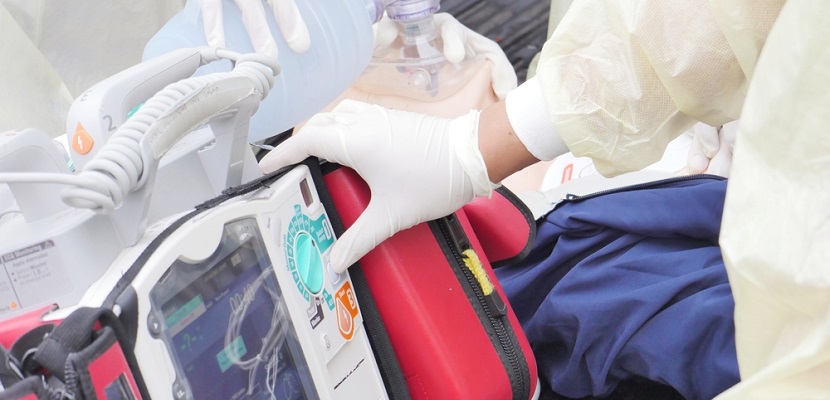Readiness is Everything: Preparing Health Care Providers to Recognize and Respond to Chemical Weapons Attacks
Jacqueline Mitchell 617-667-7306, jsmitche@bidmc.harvard.edu
APRIL 26, 2018

Disaster medicine specialist proposes an updated triage system to “prepare for what we hope never happens”
BOSTON – More than 80 people died this month in a suspected chemical attack in Syria. In March, a former Russian double agent narrowly escaped assassination by a nerve agent smeared on his front doorknob in a British city. In response to the troubling rise of chemical warfare agents being deployed against civilian targets, a disaster medicine specialist at Beth Israel Deaconess Medical Center (BIDMC) is urging health care professionals to learn how to recognize and respond safely and effectively to such an attack.
In a review published today in the New England Journal of Medicine, Gregory R. Ciottone, MD, Director of the Division of Disaster Medicine in the Department of Emergency Medicine at BIDMC, advocates for an overhaul to the systems currently in place to respond to a chemical weapons strike on U.S. soil. In addition to calling for increased training and awareness, Ciottone also proposed a triage system – available online – based on recognizing the signs and symptoms of specific agents during the early phase of a chemical weapons attack.
“We are witnessing an escalation in chemical weapons attacks on civilian populations globally,” said Ciottone, who is also Director of Medical Preparedness at the National Preparedness Leadership Initiative, a joint program of Harvard’s T.H. Chan School of Public Health and the Center for Public Leadership at the Harvard John F. Kennedy School of Government. “Deadly chemical agents, originally created for the battlefield, are now being deployed in urban centers. As health care professionals, it is our responsibility to the communities we serve to become better prepared to respond to such events and treat victims.”
Ciottone’s triage system emphasizes training emergency medical responders to first recognize the signs that a chemical attack has occurred – something that might not be obvious if combined with traditional weapons such as firearms and explosives. First-responders must quickly analyze the scene of a mass casualty event for signs of chemical agents, including more victims than would be expected from an explosion or conventional attack, multiple victims with no outward signs of trauma, and clusters of victims collapsing with similar symptoms..
Ciottone advocates that emergency medical personal should be trained to then determine which class of agent is present by recognizing toxidromes – the signs and symptoms characteristic of a given class of chemical agents. Ciottone categorizes potential chemical warfare agents into 10 different classes of poisons that each induce a unique set of symptoms, including nerve agents, opioids, asphyxiants, vesicants, riot control agents, pulmonary agents and others, all with unique toxidromes.
The rapid deployment of this toxidrome recognition-based triage system, Ciottone writes, could save civilian lives while decreasing the risk to responding healthcare workers.
“Now is the time to be proactive and take the necessary steps to prepare for a chemical weapons attack,” Ciottone said. “As a public health system we must adequately train our EMS and hospital-based healthcare providers, and prepare for what will hopefully never come.”
About Beth Israel Deaconess Medical Center
Beth Israel Deaconess Medical Center is a leading academic medical center, where extraordinary care is supported by high-quality education and research. BIDMC is a teaching affiliate of Harvard Medical School, and consistently ranks as a national leader among independent hospitals in National Institutes of Health funding. BIDMC is the official hospital of the Boston Red Sox.
Beth Israel Deaconess Medical Center is a part of Beth Israel Lahey Health, a health care system that brings together academic medical centers and teaching hospitals, community and specialty hospitals, more than 4,700 physicians and 39,000 employees in a shared mission to expand access to great care and advance the science and practice of medicine through groundbreaking research and education.
